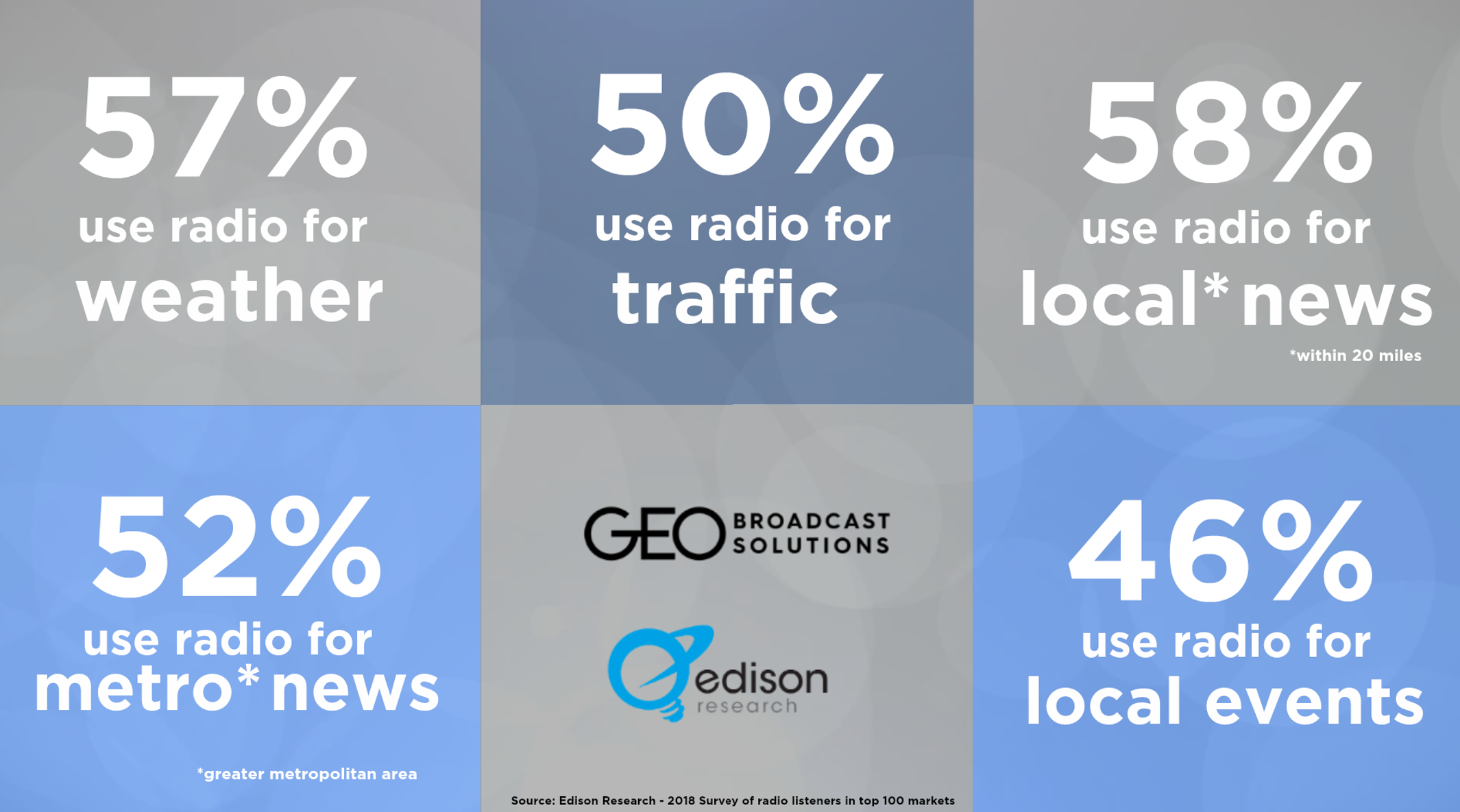The Ability To Locally Target Radio Advertising is Coming
GeoBroadcast Solutions deploys and is focusing on Geo-Targeting of RBDS text advertising and messaging, along with HD Radio text and graphical advertising. This is allowed under FCC regulations and is rapidly gaining awareness. GBS was initially formed to deliver Geo-Targeted audio based on a listener’s geographical location and has performed such tests under FCC special authorizations. These tests include Salt Lake City, Utah in mountainous terrain (with KDUT in 2010), in Sebring, Florida in flat terrain (with WWOJ in 2011), and in Milwaukee, Wisconsin in an urban mobile environment (with WIIL in 2016). In each instance the test results and recorded audio have been submitted to the FCC by the respective broadcaster, and has received outstanding industry support. BUT THAT’S JUST THE BEGINNING! There is now a petition for a Notice of Proposed Rule Making (NPRM) with the FCC which would allow full time Geo-Targeted operation of the main channel audio channel to listeners. When passed, this will change the game; allowing radio to regain its place as the hyperlocal choice for advertisers. Learn what you can do to help the FCC allow radio to remain competitive to other media avenues that allow Geo-Targeting (including TV) today!
Local Radio Stations Can Broadcast Geofenced Ads with ZoneCasting™








